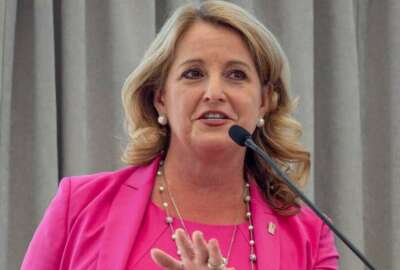
How much is enough for IT modernization?
Pandemic response has acted like a pressure test for federal IT systems and related modernization funding.
Democrats have used the pandemic to push for an order of magnitude jump in spending on agency technology modernization. You can see why.
The government’s systems tend to hiccup in crises. Look at how much trouble the Small Business Administration had with its E-Tran system when hit with millions of applications all at once. Banking Journal reported that SBA blocked use of robotic processing automation for loan applications because of the burden they put on E-Tran.
Isn’t RPA one of those modern features chief information officers regularly say they want in their systems?
For sure, SBA was hit with a double-whammy. It had to toss home most of its people to telework. Then it became the designated implementer of hundreds of billions of dollars in relief loans. That caused the agency to triple in size within 60 days. Deputy CIO Guy Cavallo told an AFCEA Bethesda webinar last week SBA could accommodate this because of years worth of modernizing work under CIO Maria Roat. Roat is now headed to the White House as deputy federal CIO.
“Overnight we were able to fix this because of the three-and-a-half years of work that happened before that,” Cavallo said, citing the fact that nearly 100% of employees were able to telework on day one of stay-home orders. The groundwork included commercial cloud use, increasing virtual private network (VPN) capacity and ingesting large quantities of portable computing devices.
Tellingly, Cavallo said that SBA’s nominal IT budget is around $30 million. But it spent many times that, thanks to a piece of the billions in supplemental appropriations Congress made for many agencies to increase their capacity.
Capacity expansion is one form of modernization. Agencies mostly passed the pressure test in getting large numbers of people into teleworking mode.
But modernization also encompasses better external user experiences and the flexibility to handle large surges in demand. To me that leads to the need to not only develop new applications but also to containerize them in such a way as to let IT staffs scale them up into multiple cloud instances when needed and trim them back when normal demand returns.
Given the inventory of fully functioning but dated systems in the government, the question remains: How much new money do agencies need to modernize?
An early version of the CARES Act proposed $3 billion specifically for IT modernization. But that didn’t make it into the final version. The House included $1 billion in the subsequent HEROES Act. But that passed on party lines and it’s doubtful the Senate will even take it up .
Still, it’s a relevant question. Rep. Gerry Connolly (D-Va.) is knowledgeable about federal IT issues and has pushed repeatedly for a larger Technology Modernization Fund. Connolly acknowledged the $96 billion a year the government already spends on IT. He said not enough of his colleagues understand that it’s mostly spoken for, keeping the old systems running.
An IT rule of thumb states that an organization should spend 20% percent of its budget on innovation, modernization, whatever you want to call it. And that’s the trouble with the one-time-cash-infusion idea. You might be able to move all the old logic into a spiffy new virtualized, containerized and cloud-hosted system. But that too will eventually grow obsolete. By the 20% metric, either agencies would have to devote $15 billion or $18 billion a year out of existing funds to modernization. That doesn’t seem to be happening.
The idea of a modernization fund therefore has appeal. Agencies can go to it, in theory, as needed. It brings the pressure of accountability, because the Office of Management and Budget administers the funds. And it brings pressure to do projects correctly; there’s a revolving fund payback requirement. It took a while for agencies to glom onto the idea, but eventually many applied for TMF funds. So far about 10 have received money from the $25 million Congress gave it. Would more agencies become more eager if the TMF were $1 billion? And would OMB award it all?
You could say, well $1 billion itself is just a fraction of the total IT budget. How far could it go in the first place? But that $1 billion would actually be much larger in relation to what agencies now spend on software development and new hardware — and larger still in relation to what they devote to developing new capabilities and services.
How about this: Put a constant $1 billion in the TMF. If agencies submit quality requests for, I don’t know, $350 million, then replenish it by that amount for the subsequent year. Like an ever-normal granary, the money would be there. Demand might fluctuate, but we could all skip the legislative quibbling process.
Now that Maria Roat is the deputy federal CIO, who better to go to for advice than someone who spent three years modernizing her own agency?
Copyright © 2025 Federal News Network. All rights reserved. This website is not intended for users located within the European Economic Area.
Tom Temin is host of the Federal Drive and has been providing insight on federal technology and management issues for more than 30 years.
Follow @tteminWFED
Related Stories






